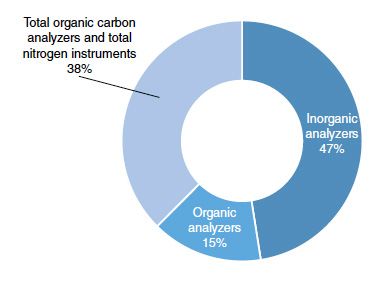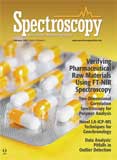Market Profile: Elemental Analyzers
The market for elemental analyzers embodies three technology categories, consisting of inorganic analyzers, organic analyzers, and total organic carbon and total nitrogen (TOC–TN) instruments.
The market for elemental analyzers embodies three technology categories, consisting of inorganic analyzers, organic analyzers, and total organic carbon and total nitrogen (TOC–TN) instruments. All three technologies are used mainly to determine the elemental content of a sample for carbon, hydrogen, nitrogen, oxygen, and sulfur.
However, what differentiates the technologies is the type of sample being analyzed. Inorganic analyzers are predominantly used for metal samples; organic analyzers are used for organic matrices such as food and energy–fuel samples; and TOC–TN instruments are chiefly used for water and wastewater samples.
Inorganic analyzers represent the largest share of the market. The last several years have not been kind for inorganic instrument sales because of lackluster demand from the metals industry. However, the metals market is expected to swing upward for 2018, which bodes well for the inorganic analyzer market.
Demand for organic analyzers has also been somewhat stagnant, but is expected to be robust for 2018. CHN-type instruments, which employ a combustion methodology, saw strong demand from the energy sector, particularly in China with the country’s use of coal. However, growth was offset due to weakness in nitrogen and protein systems, which employ Kjeldahl or Dumas methods. While Kjeldahl and Dumas remain well-accepted methods for determining protein content, the use of molecular spectroscopy techniques and mass spectrometry is increasing.
For TOC–TN, many users are switching to online systems. Nevertheless, lab-based instruments continue to play a significant role in the wastewater market. Demand for TOC–TN instruments is also expanding into other industries such as pharmaceuticals and semiconductor.
The market for inorganic analyzers is led by LECO, Horiba, and ELTRA (Verder Group), which combine for more than 60% of the market. For organic analyzers, LECO leads the market for CHN-type instruments, while FOSS and Buchi top manufacturers for nitrogen/protein determinations. Leading manufacturers of TOC–TN include Shimadzu, GE Analytical, and Hach (Danaher). These three companies are estimated to own about half the market for TOC–TN and other analyzers.
2017 elemental analyzer demand by technology.

Market size and growth estimates were adopted from TDA’s Industry Data, a database of market profiles from independent market research firm Top-Down Analytics. For more information, contact Glenn Cudiamat, general manager, at (888) 953-5655 or glenn.cudiamat@tdaresearch.com. Glenn is a market research expert who has been covering the analytical instrumentation industry for more than 20 years.

Market Profile: Mass, Molecular, and Atomic Spectroscopy
December 1st 2018Mass spectrometry, molecular and atomic spectroscopy technologies combine to represent more than a fifth of the overall market for laboratory analytical instrumentation. These techniques are perhaps the most broadly used instruments, with utility in pharmaceuticals and other life sciences, chemicals, environmental, food, clinical/Dx and other applications.